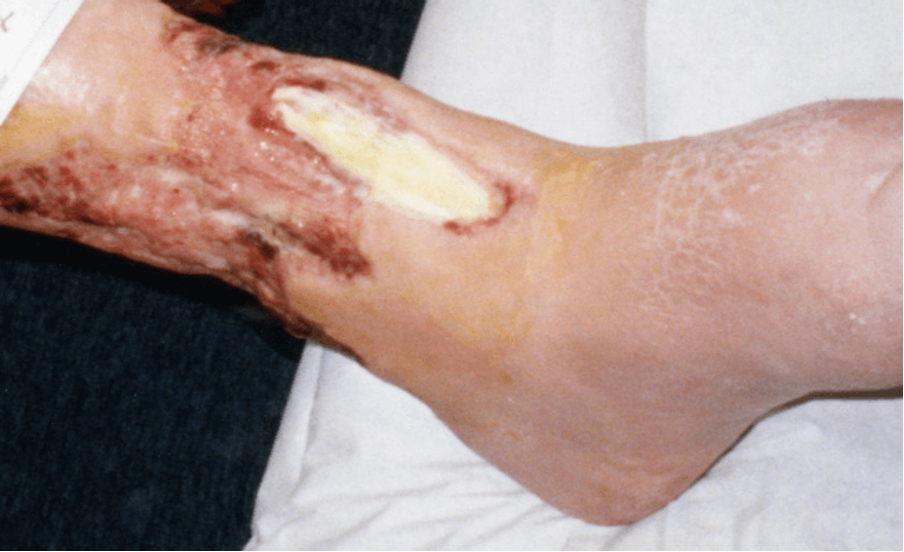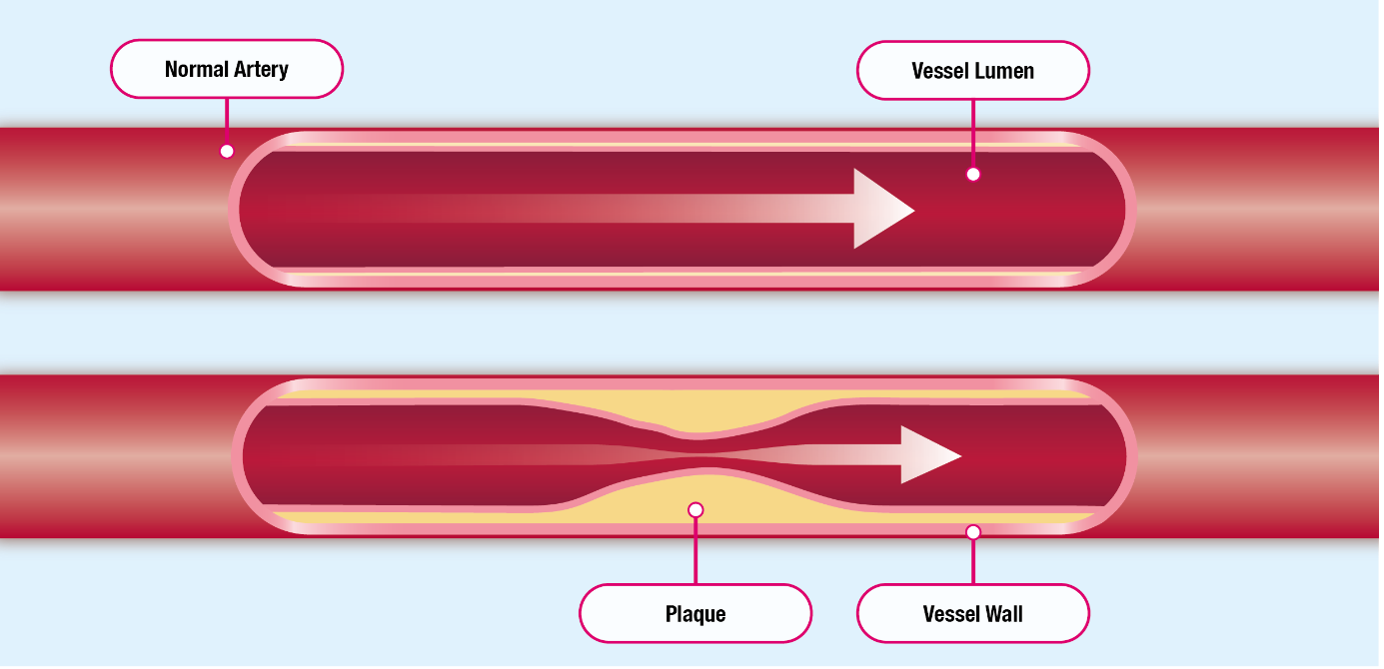ARTERIAL LEG ULCERS

CAUSES OF ARTERIAL LEG ULCERS
Arterial ulcers occur as a consequence of reduced arterial blood flow and ensuing tissue perfusion.
Atherosclerosis is the most frequent cause of arterial disease and leg ulceration (Newton, 2011).
The most common causes of arterial ulcers are:
- Arteriosclerosis (hardening of the arteries)
- Atherosclerosis (thickening of the arteries, due to the buildup of fatty materials)
- Restrictions to blood vessels due to peripheral arterial disease
- Chronic vascular insufficiency
- Vasculitis (inflammatory damage of blood vessels)
- Diabetes mellitus
- Renal failure
- High blood pressure
- Trauma
- Limited joint mobility
- Increased age
Other causes include diabetes, thromboangiitis, pyoderma gangrenosum, thalassaemia, and sickle cell disease, some of which may predispose to the formation of atheroma (Grey et al., 2006). Less common causes are thromboembolism, Raynaud’s disease and cold injury (Haslet et al., 1999).
As ageing occurs, the tunica intima thickens and loses elasticity. Thickening of the intima is one cause of arterial stenosis, which puts older adults at greater risk for arterial insufficiency (Vuolo, 2009). Furthermore, the reduction in arterial blood supply results in tissue hypoxia and tissue damage (Grey et al., 2006).
Atherosclerosis
Atherosclerosis is a focal thickening (plaque) of the innermost layer (intima) of elastic and muscular arteries such as the aorta, coronary, cerebral, internal carotid, iliac, femoral and mesenteric arteries. Arteries of a diameter of less than 3mm are not affected.
This condition arises as fatty deposits, called atheroma, are laid down in the arteries. The flow of blood through the artery becomes impaired by the build-up of atheroma.

The artery canal becomes completely blocked by this build-up or from a blood clot forming on the rough surface of the deposits. Smokers commonly develop atherosclerosis as the nicotine in tobacco causes the build-up of deposits on the inner lining of arteries (Tortora & Grabowski, 2003).
There are also other risk factors for the development of atherosclerosis. These include:
- Cigarette smoking
- Hyperlipidaemia
- Hypertension
- Physical inactivity
- Age >65
- History of coronary artery disease
- Family history
- Diabetes mellitus
(Benbow, 2006; Vascular Society, 2017)
Other risk factors to consider for the development of an arterial ulcer:
- Foot deformity and callus formation resulting in focal areas of high pressure
- Poor footwear that inadequately protects against high pressure and shear
- Obesity
- Absence of protective sensation due to peripheral neuropathy
- Limited joint mobility
(Woundsource, 2017)